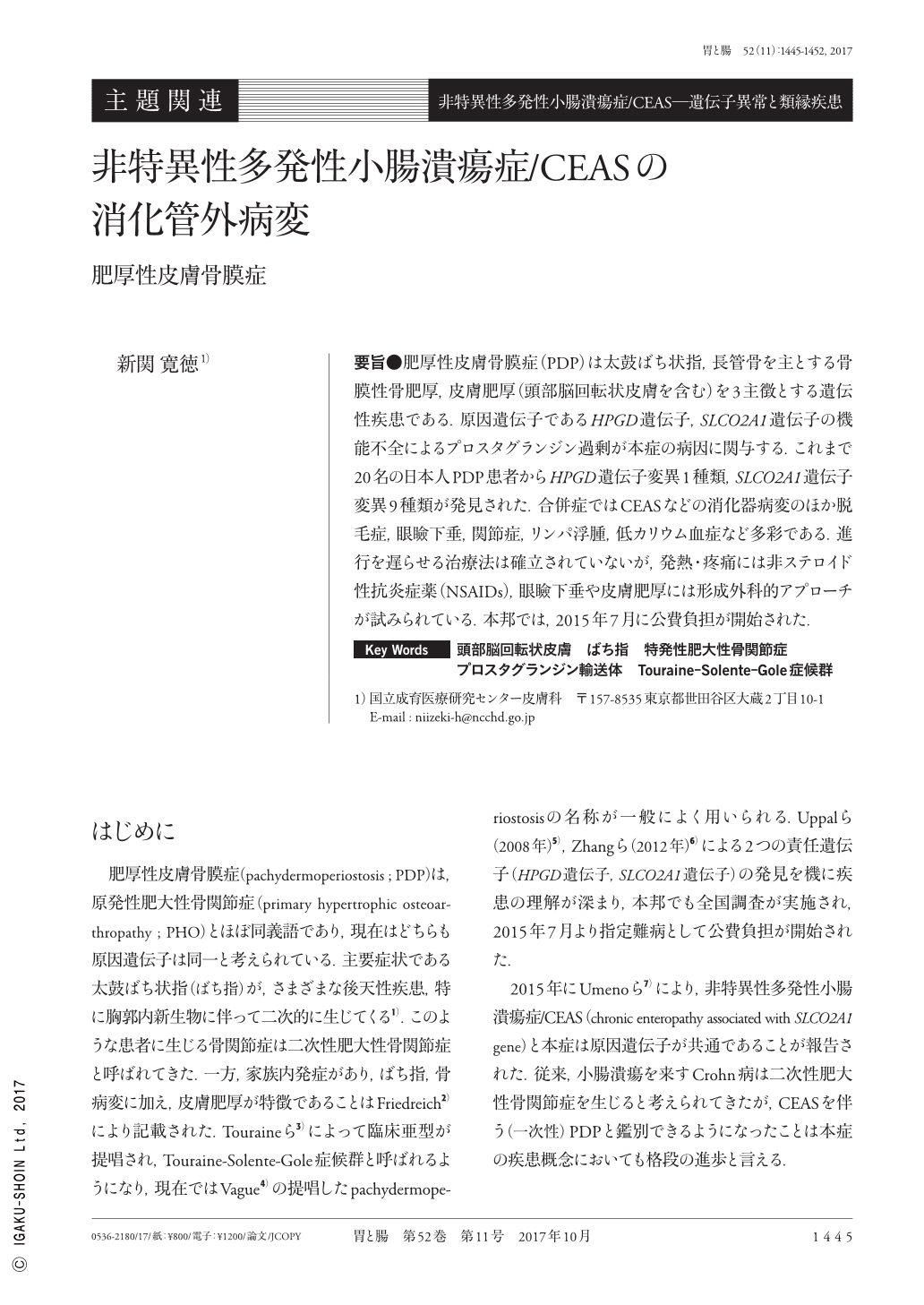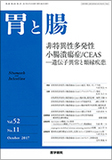Japanese
English
- 有料閲覧
- Abstract 文献概要
- 1ページ目 Look Inside
- 参考文献 Reference
- サイト内被引用 Cited by
要旨●肥厚性皮膚骨膜症(PDP)は太鼓ばち状指,長管骨を主とする骨膜性骨肥厚,皮膚肥厚(頭部脳回転状皮膚を含む)を3主徴とする遺伝性疾患である.原因遺伝子であるHPGD遺伝子,SLCO2A1遺伝子の機能不全によるプロスタグランジン過剰が本症の病因に関与する.これまで20名の日本人PDP患者からHPGD遺伝子変異1種類,SLCO2A1遺伝子変異9種類が発見された.合併症ではCEASなどの消化器病変のほか脱毛症,眼瞼下垂,関節症,リンパ浮腫,低カリウム血症など多彩である.進行を遅らせる治療法は確立されていないが,発熱・疼痛には非ステロイド性抗炎症薬(NSAIDs),眼瞼下垂や皮膚肥厚には形成外科的アプローチが試みられている.本邦では,2015年7月に公費負担が開始された.
PDP(Pachydermoperiostosis)is a genetic disorder characterized by a triad of symptoms, such as clubbing of fingers, periostosis of long bones, and pachydermia including cutis verticis gyrata(pachydermia of the scalp).
Mutations in the causative genes, such as HPGD and SLCO2A1, resulting in increased levels of prostaglandin E2 are involved in its pathogenesis.
A previous study reported that among 20 Japanese patients with PDP, one carried an HPGD mutation, whereas the others carried nine SLCO2A1 mutations. Various complications associated with the disorder include alopecia, ptosis, arthropathy, lymphedema, hypokalemia, and gastrointestinal diseases, such as CEAS(chronic enteropathy associated with SLCO2A1).
In Japan, the public medical expense assistance system for PDP was established in July 2015. Currently, there is no treatment to control the progression of PDP ; however, nonsteroidal anti-inflammatory drugs have been used to alleviate fever and arthropathy. In addition, reconstructive surgery has been attempted for ptosis and pachydermia.

Copyright © 2017, Igaku-Shoin Ltd. All rights reserved.


